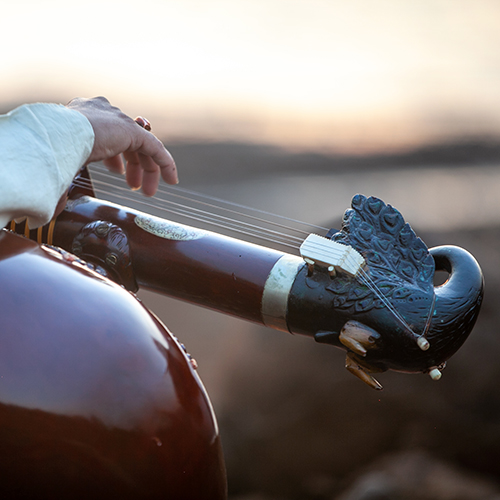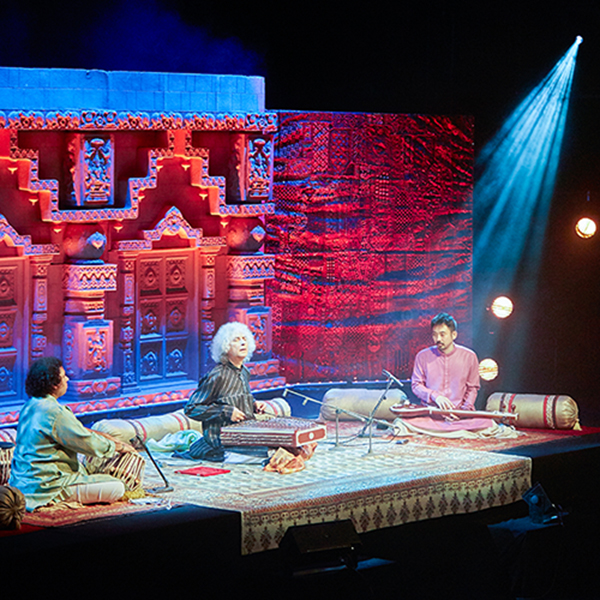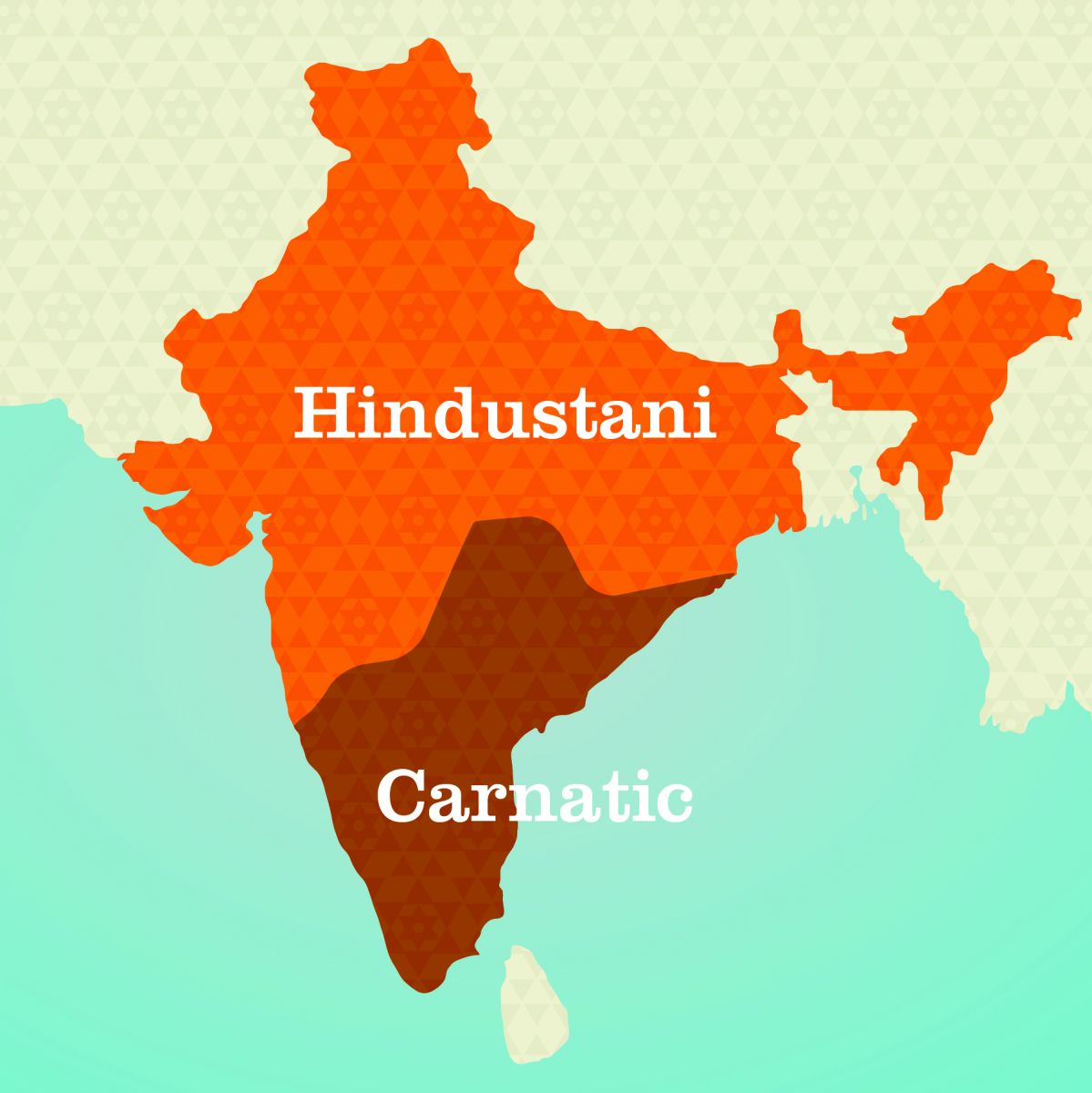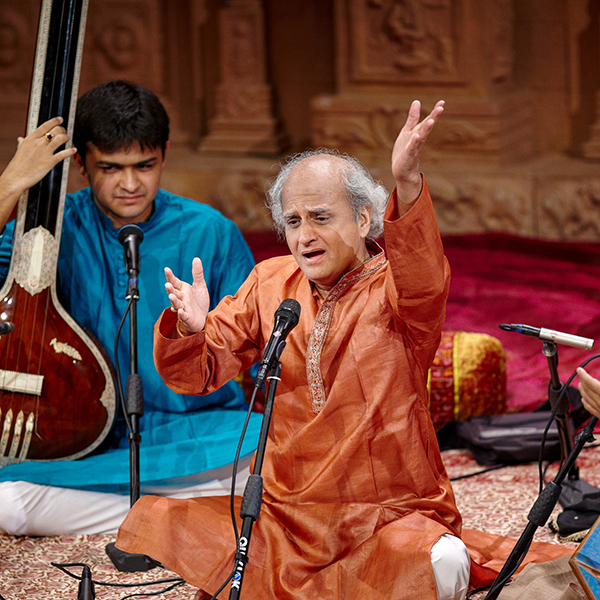The beginner's guide to Indian classical music. Whether you’re completely new to raga music or just need a refresher, we’ve put together this brief overview of all things raga music to help you feel at ease when visiting one of our concerts or watch our videos on YouTube or our Darbar Concert Hall.

Music with a definitive personality generating an emotional response to all beings. Raga music belongs to the worlds most evolved holistic and improvised classical vocal and instrumental music. In its simplest form a raga is a composition of musical swaras (musical notes) with a sequence, form and structure that gives rise to a definitive personality and character just like a human being or spiritual entity. Every raga has its special types of serial notes for ascent (aroha) and decent (avroha) which determines the structure. The note that which expressed the greatest character of the raga is called the jiva, or the soul of the raga. The component notes stand in their significant relationship to one another which brings a wave of passion or emotion. The degree of insistence or importance of a particular note lends flesh, blood, colour and life to the scale and creates a raga.
Raga music is performed most commonly staged in small gatherings (bhaitaks) or concerts halls like the Barbican Centre in London, home to the Darbar Festival.
Unlike an orchestra with a large number of musician and conductor, Indian classical musicians will sit commonly cross legged on a small rostrum and perform their music. An important part of the performance is the feeling that the musician gets from the venue and vibe off the audience verbal and hand reactions, something shunned in western classical music. Typically, this small ensemble varies in size from just 2 to 7. Today, the music is amplified to reach the audiences in theatres as the instruments themselves are very quiet.


Music from northern India is called Hindustani and Carnatic from the south. A gradual and long-drawn out evolution through complex Indian historical and social factors eventually led to two distinct traditions associated with two different ethnicities. The people of North India are, broadly, defined as Aryan whilst the southerners are known as Dravidian – with the latter believed to be the original inhabitants of the Indian sub-continent.
Many differences between the two traditions come from the fact that the languages of the North and South belong to two entirely different language groups, meaning that the same raags and musical concepts are often known by entirely different names.
Although there are always exceptions to the rule, certain instruments have come to be the mainstay of one or the other tradition. For instance, the violin, introduced into South India during the 18th century, is very rarely heard in North Indian music whilst it is predominant in the South both as a solo instrument as well as melodic accompaniment. Similarly, the sitar and sarod – the two most popular string instruments in the North – are almost never used in the South.
The word gharana comes from the word ‘ghar’ or house. A gharana is the name given to an Indian classical musical style which has evolved from the geeti or bani (style of singing including lyrics/poetry) usually sung by a family or associated to particular musicians. A gharana comes into existence after it has been in a family for 3 generations and it becomes accepted by other musicians who take up that gharana.
The gharana system remained strong over centuries as the Indian classical tradition uses the guru-shishya parampara (teacher to student learning) and mostly this would be from father to son who would not teach outside of the family and keep the musical secrets within the family. In the past the only way to learn a gharana was to travel to the city from which that gharana evolved like Gwalior, Jaipur, Patiala, Darbhanga etc.

![]()
Enjoy nearly 1000 handpicked raga performances,
exclusive behind-the-scenes interviews, and insightful documentaries & TV shows,
all at your fingertips.
Keep up to date with the latest news, events, music and musings across our social channels
For hundreds more clips and shorts, vist our YT page here 